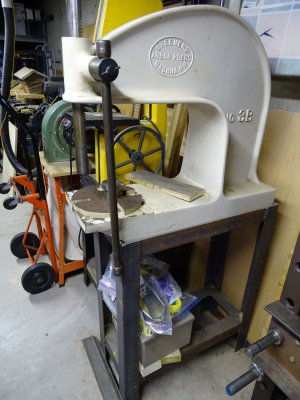- Joined
- Dec 18, 2019
- Messages
- 7,674
Has that stopped any of us before?If I can find material on the cheap, absolutely. Why would I buy it when I can make it for three times the cost. Right?!
Do you have a steel yard where you can buy cut offs? That's how I get bigger pieces. The cut off steel prices are significantly lower than prime stock. They have a surprising amounts of pieces of all sizes and shapes, but you need to go there with a BOM, dimensions and some creativity in hand.
I do understand the cost and time issues. In the past year had to make my own monitor stand because nothing existed that would fit in the space required. I chose to go with a commercial VESA adapter and swivel assembly due to the economics of time, but chose to make my own base and stand. I used steel stock from the cutoff area. Worked out far better than I expected and bought me a lot more desk space.



